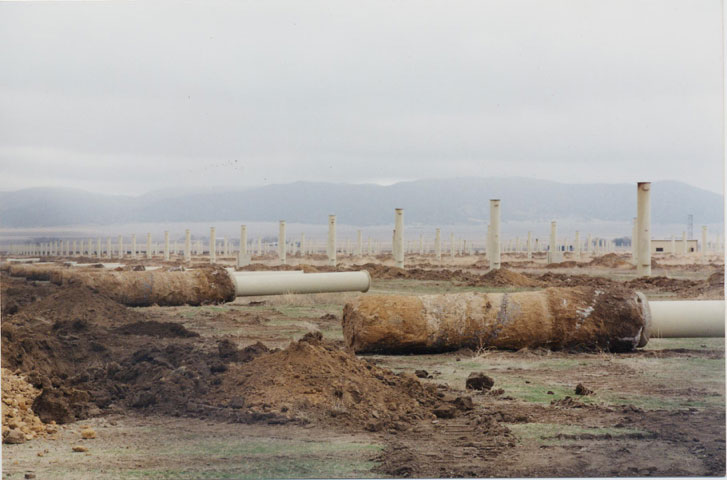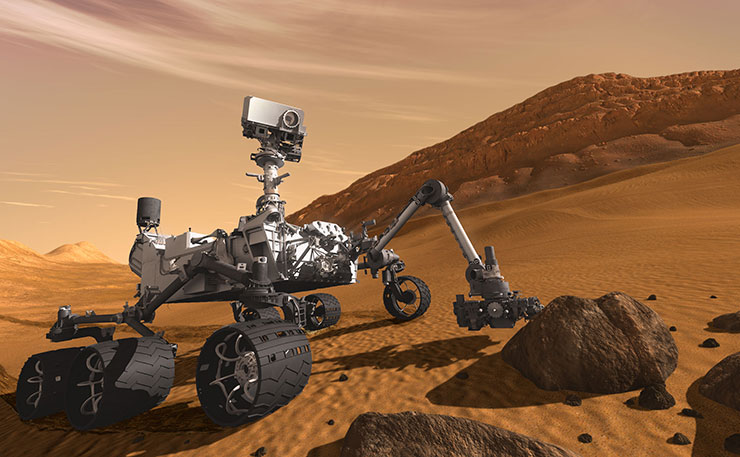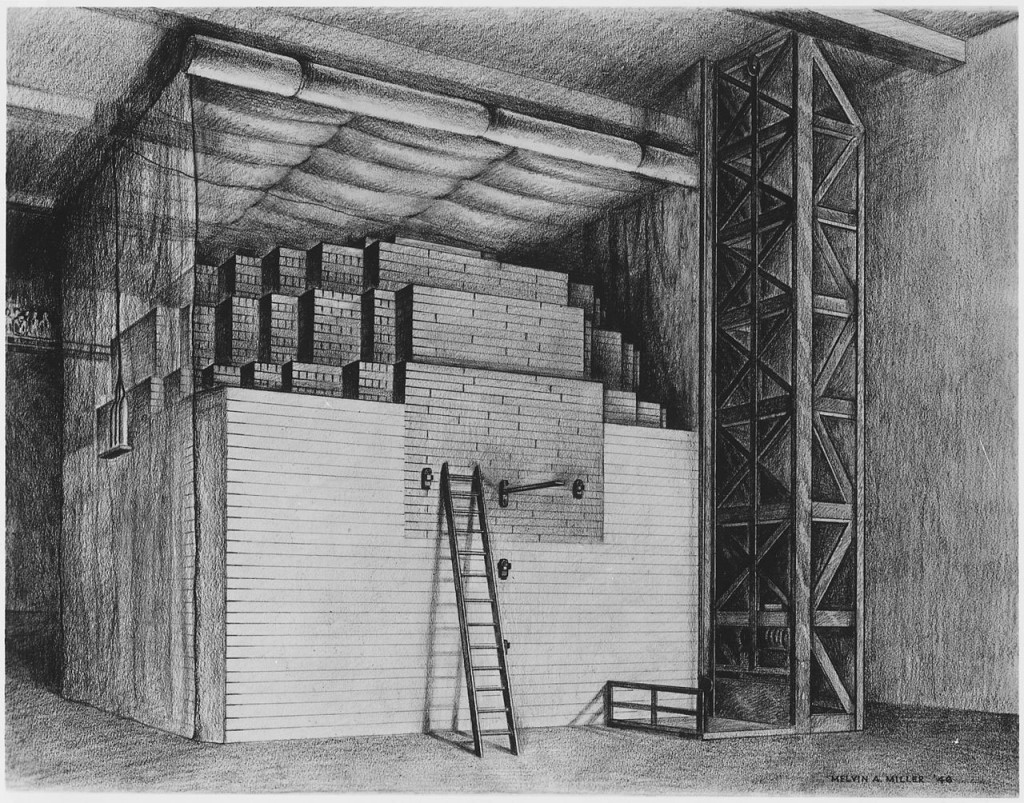Harnessing the energy of the sun is not a new concept, writes Geoff Russell. It’s also not our saviour.
It’s easy to forget that the photovoltaic cell is a very old technology; especially if your education was more Shakespeare than Newton.
PV cells go back over 60 years; and the basic science behind them is even older. It dates back to an observation by Alexandre Becquerel in 1839. Shine a light onto some materials and loose electrons can flow. Flowing electrons are a current; behold the photovoltaic effect.
But sometimes electrons leave the material altogether, which isn’t as easy to detect and wasn’t discovered until much later. This is called the photoelectric effect. It’s easy to get confused by two such similar words.
Efforts to apply the photovoltaic process to something useful resulted in the first solar cell patent being issued in 1888. And, no, that’s not a typo, it’s just a really old idea. But it was never more than a curiosity until people worked out how to grow highly pure metallic crystals.
That problem was cracked in 1918, by one Jan Csochralski. A few decades later and the method was adapted to grow silicon crystals. So by the 1950s solar cells were being developed for space applications with the first practical cell being produced in 1954. Predictions quickly followed that it would lead to a source of limitless energy from the sun.
A few decades later, in 1989, Professor Martin Green of NSW University put a time on such predictions. He thought solar cells could replace coal in “10 to 15 years”.
Green was obviously aware of the utility scale solar plants being rolled out in the US. The biggest in 1983 was the plant at Carrizo Plains; a hundred thousand 1×4 foot solar panels. You may well ask what happened to this plant. Here’s a picture.

Carrizo was part of a short lived explosion of wind and solar energy generation rolled out in response to the oil crisis of the 1970s. But calling it an explosion is a little grandiose, the energy it produced was more of a whimper.
But wait, there’s another trick which electrons have which is worth a mention. You don’t have to shine light on some materials to make electrons move or leap from the surface. Some materials just emit electrons spontaneously: “Look mum no light!”.
This happens during some types of radioactive decay; which is just the spontaneous reorganisation of the furniture inside an atom with the surplus bits being ejected. When the surplus bits are electrons, it’s called beta radiation.
YOU MIGHT ALSO LIKE…
• Finkeling At The Edges: Australia Misses Another Opportunity To Fix Our Energy Policy Chaos
• Trump Sinks, So Women Must Lead The Fight To Tackle Climate Change
Who discovered radioactivity? That would be Becquerel junior, Alexandre’s son Henry, in 1895. Which is rather a long time after the discovery of photovoltaic effect, and even after the first solar cell was patented. Henry was honoured by having the Becquerel name used as one of the fundamental units of radioactivity.
If something is undergoing 1000 radioactive decays per second, then its activity is 1000 Becquerels (Bq). It’s a tiny unit. A human body is radioactive to the tune of about 105 Bq per kilogram, so a person weighing 70 kg has a radioactivity level of 7,400 Bq. This is roughly 50/50 made up of decays from potassium and carbon atoms. Both elements have atoms which exist in slightly different forms which are rather prone to furniture reorganisation.
You can use radioactive decay to make batteries. One method uses beta radiation and the result is called, appropriately, a betavoltaic device. Another form uses the heat that can result from decay events. NASA’s Mars Curiosity Rover powered its way along the Mars landscape powered by a plutonium battery. NASA sources have revealed that plans to use a lithium-ion power source for the Rover were abandoned when it was realised that there were no power points on Mars to plug in the charger.

Geothermal energy is the ultimate radioactive battery. It is simply harnessing heat from the radioactivity that drives the earth’s internal fire.
The interactions of sunshine, matter and radioactivity hit the headlines recently with the discovery that Indigenous Australians became Indigenous thousands of years earlier than had previously been thought. How on earth do people know such things? The Guardian article I just linked doesn’t tell you. And what’s it got to do with radioactivity? Or sunshine? The answer is in the sands of time… more formally known as OSL dating.
Bury a grain of sand and what happens? The natural radioactivity of all the material around it is constantly hitting that grain. Every cubic meter of even the most organic of organic gardens is radioactive because plenty of elements have atoms prone to furniture rearrangement.
All organic produce is radioactive because it all contains carbon and some forms of carbon undergo radioactive decay. A grain of sand is a quartz crystal and as radiation hits it, it changes the electron configuration ever so slightly; it’s a little like winding a clock with a spring. Does anybody remember such clocks? Probably only from old TV shows or museums.
This isn’t like photoelectricity, it doesn’t eject electrons and it isn’t like the photovoltaic effect, electrons don’t move far enough to create a current; they just get a little added energy.
So each decay in the surrounding material releases a little bundle of radiation which winds up the spring by an ever so tiny amount. Expose that grain of sand to sunshine and … sproing! … the energy is released. Physicists can do a lot more than just describe this process, they can measure it in excruciating detail. So here’s a rough outline of the process; very rough.
Crawl around in the dark digging up some grains of sand around the artifacts you want to date. Measure the radioactivity in the surrounding material. Take your sand to a very special laboratory and expose the grains to light and measure the energy released. Happily only some frequencies of light release the energy, so you don’t really need to do everything in pitch black darkness.
If the grain was underground for a long time the amount of energy will be high, but if only recently buried, it will be low. There is a predictable relationship between time buried, radiation in the area where the sand came from and the energy released. The science of crystals is far deeper and more wonderous than anything the world’s spiritualists could possibly imagine.
In extraordinarily rare cases, radioactive decay can lead indirectly to large atoms breaking into pieces and releasing large amounts of energy. This process, called fission, was discovered by people in 1938. But the first example of fission that anybody knows about happened naturally in Africa at Oklo about 1.7 billion years ago.
This entirely natural nuclear reactor ran for a few hundred thousand years. It generated the first globs of high-level nuclear waste. This ancient natural reactor was only discovered in 1972, but perhaps there are others still awaiting discovery. When I say, “large amounts of energy”, I mean something that is really tough to comprehend. The amount of energy in a golf ball sized piece of pure uranium, assuming you could get it all, which some modern reactors can, is enough to power an entire human life; 70+ years of every litre of oil, or kwh of electricity; everything.
The first demonstration of the feasibility of people replicating this natural process happened in 1942 when the first reactor was built in a squash court in Chicago. It took 16 days to assemble the graphite blocks, uranium metal and uranium oxide. It’s first operating output was half a watt!
Like the early solar cells, it was just a toy. But predictions about it’s future were much closer to the mark.

The first nuclear power plant was connected to the grid just 12 years later in the UK. It ran for 47 years and produced more electricity every year than Australia’s largest 2015 solar plant, Nyngan. It will take the Nyngan solar about 60 years to produce as much electricity as that 1956 nuclear plant produced in 47. But Nyngan, of course, isn’t expected to run for anything like 60 years. It will be lucky to last its anticipated 30. Carrizo plains only managed 11.
While the understanding of the fundamental science of sunshine, inanimate matter and radiation and their interactions goes back over 100 years, the interactions of sunshine, radiation and living matter is very recent and almost entirely the province of experts.
Biology, and more importantly medicine, are both very different from maths, physics and chemistry. The latter trio proceed pretty much incrementally.
When quantum physics displaced Newtonian physics as our best estimate of truth, people didn’t stop using Newtonian physics because it still gives excellent answers in many situations. But progress in microbiology and oncology is very different. The modern understanding of the interactions between radiation, DNA, genes, mutations and cancer is totally incompatible with that of the 1950s.
This can be amply illustrated by the scientific beliefs which launched the anti-nuclear movement. When Linus Pauling laid the foundations of this movement in the late 1950s, it wasn’t just that he didn’t know much, but that everything that he thought he knew about these fundamental interactions was simply wrong or misleading, and usually both.
It was all overturned in the following decades. But we have been left with plenty of intellectual detritus; we have a potent political and environmental movement based entirely on obsolete science. When Pauling was writing, genes were thought to be highly stable, with natural mutations occuring perhaps once in a hundred thousand generations (See Jan 1958, p.19). But what’s the modern estimate of mutations?
It’s that every one of your 20,000 genes is mutated in about a billion cells of your body during your lifetime. Pauling used wrong assumptions to predict thousands of birth defects from atmospheric bomb testing fallout. It didn’t happen because it was never going to.
But that’s a topic best kept for another piece.
Meanwhile, we are building our own generation’s version of the Carrizo plains; just bigger and grander.
Donate To New Matilda
New Matilda is a small, independent media outlet. We survive through reader contributions, and never losing a lawsuit. If you got something from this article, giving something back helps us to continue speaking truth to power. Every little bit counts.






